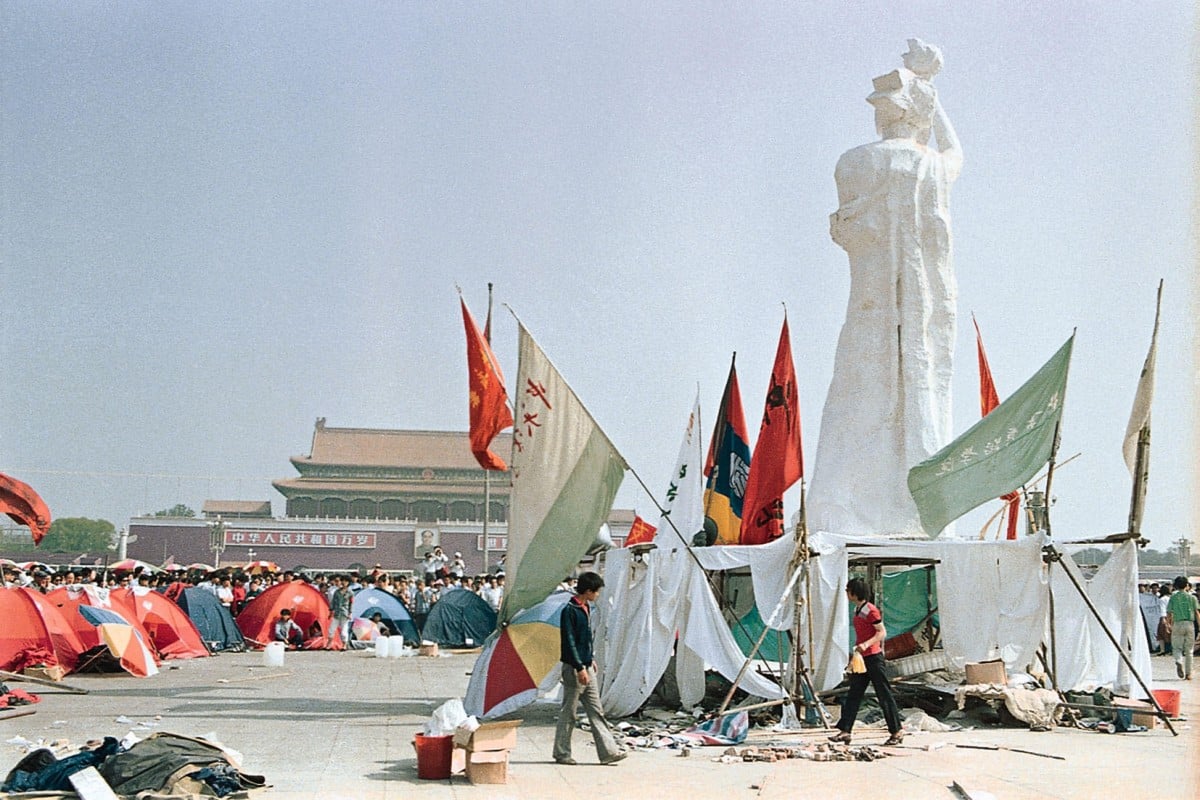 A statue of the Goddess of Democracy. Photo: MPHOTO
A statue of the Goddess of Democracy. Photo: MPHOTOYou've probably heard about the marches and candlelight vigil in Victoria Park on June 4 every year. But why is the day such a big deal? Here's a quick guide.
What happened on June 4, 1989?
Students and protesters in China marched on the streets because they wanted to do away with corruption among the Communist Party elite, and other political and economic reforms. Some started a hunger strike.
Hundreds of thousands of people protested around Tiananmen Square in Beijing until finally the People's Liberation Army (PLA) moved in to clear the area. The soldiers fired on the protesters, killing several hundred of them. The Chinese government called the military operation a victory.
Why were the students protesting?
All of this started when a man named Hu Yaobang died of a heart attack in April 1989.
Hu was a senior politician who had joined the Communist Party at a young age. However, during the Cultural Revolution, the government said he wasn't loyal enough, and he was sent to the countryside for years. That made him even more critical of Chairman Mao Zedong as the leader of the party.
When Deng Xiaoping became the chairman of the party, Hu became general secretary - one of the most important roles. However, he still supported a more liberal political system.
People mourned Hu's death in Tiananmen Square, and some students demanded to meet Premier Li Peng to discuss a list of reforms for the government. The government ignored them. The students refused to go to class in protest, and People's Daily, the party newspaper, called them "a small number of people" that were spreading rumours to "poison and confuse people's minds". The protesters and their supporters didn't like that very much.
More students marched to Tiananmen Square, and some began the hunger strike.
How many people died on June 4?
We don't know for sure.
The Associated Press says at least 500; the Chinese Red Cross estimates more than 700; the South China Morning Post says 1,400; and the Chinese government estimated fewer than 300.
Why is the central government so touchy about the whole thing?
The PLA killed a lot of people that day, and the Chinese government insists it made the right call.
Five days after the crackdown, Deng called the democratic movement a "political storm" that had to happen sooner or later. He said it had to be stopped in order to have long-term stability.
The government even set up a museum exhibit in the Beijing military museum in September that year to show how the army had heroically fought back "a small group of hooligans". The exhibits included a movie showing how the army restored order to Beijing, weapons, a book with codes the students used to communicate, and grisly photographs of Chinese soldiers dying and pictures of their mothers crying. There are no pictures of wounded or dead protesters.
You may have heard how China's internet is censored to remove all references to June 4. For example, last year, the government's internet censors targeted words such as "June 4", "Tiananmen" and "tank", and also less obvious references, such as "May 35" - which would be June 4 - and even characters that sound like June 4.
Did anything change after the protests?
The central government has not made many changes. Hong Kong is the only place in China where people are allowed to observe June 4 in public. and they will tomorrow night.
You may know the name Liu Xiaobo . He was a Tiananmen Square protester in 1989, and he wrote Charter '08, a document calling for democracy. The Chinese government put him in jail in 2009, and when he was given the Nobel Peace Prize in 2010, the government called the award an "obscenity" and pointed out that Liu was a criminal.
One change the central government did make is a tiny one. In April 2013, a party newspaper and state news websites made note of Hu's death. He had rarely been mentioned publicly since the Tiananmen Square crackdown. But now his name is no longer censored online on the mainland.
